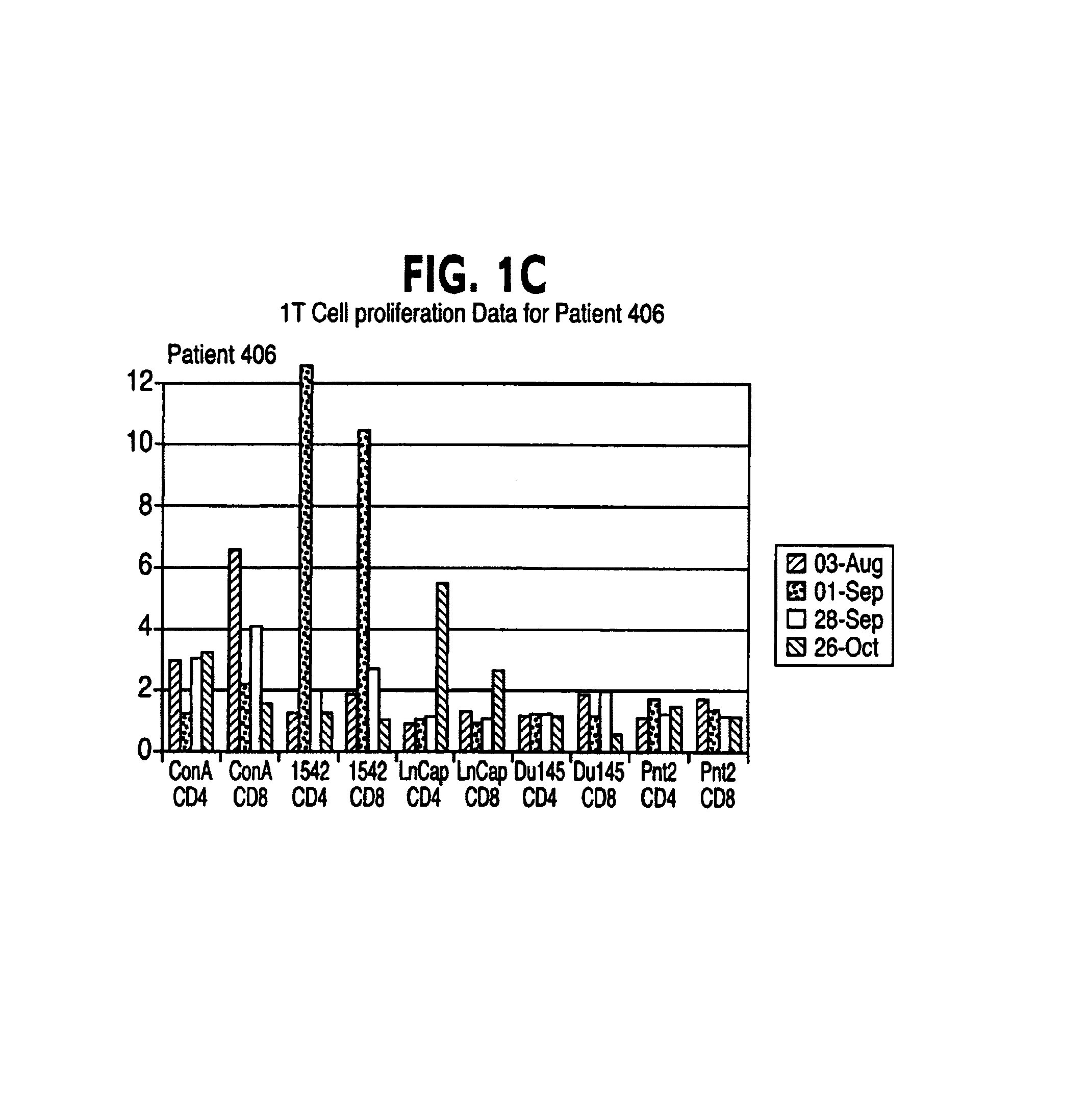Use of human prostrate cell lines in prostate cancer treatment
a prostate cancer and prostrate cell technology, applied in the direction of immunological disorders, antibody medical ingredients, peptide/protein ingredients, etc., can solve the problems of lack of targeting capability, non-specific immunomodulation is unlikely to prove sufficient to treat the majority of cancers, and monoclonal antibodies have failed to live up to their expectations
- Summary
- Abstract
- Description
- Claims
- Application Information
AI Technical Summary
Benefits of technology
Problems solved by technology
Method used
Image
Examples
example 1
Growth, irradiation, formulation and storage of cells
[0033]An immortalised cell line derived from normal prostate tissue namely PNT2 was grown in roller bottle culture in RPMI 1640 medium supplemented with 2 mM L-glutamine and 5% foetal calf serum (FCS) following recovery from liquid nitrogen stocks. Following expansion in T175 static flasks the cells were seeded into roller bottles with a growth surface area of 850 cm2 at 1–20×107 cells per roller bottle.
[0034]An immortalised cell line derived from primary prostate tissue namely NIH1542-CP3TX was grown in roller bottle culture in KSFM media supplemented with 25 μg / ml bovine pituitary extract, 5 ng / ml of epidermal growth factor, 2 mM L-glutamine, 10 mM HEPES buffer and 5% foetal calf serum (FCS) (hereinafter called “modified KSFM”) following recovery from liquid nitrogen stocks. Following expansion in T175 static flasks the cells were seeded into roller bottles with a growth surface area of 1,700 cm2 at 2–5×107 cells per roller bott...
example 2
Use of a Norm Melanocyte in a Murine Melanoma Protection Model Model
[0111]A normal melanocyte cell line was used in a vaccination protection model of murine melanoma utilising the B16.F10 as the challenge dose. The C57 mice received two vaccinations of either PBS, 5×106 irradiated K1735 allogeneic melanoma cells or 5×106 irradiated Melan P1 autologous normal melanocyte cells on days −14 and −7. Challenge on day 0 was with 1×104 B16.F10 cells and tumour volume measured every three days from day 10 onwards. Animals were sacrificed when the tumour had grown to 1.5×1.5 cm measured across the maximum dimensions of the tumour. FIG. 5 shows that vaccination with Melan 1P cells offer some level of protection against this particularly aggressive murine tumour.
PUM
| Property | Measurement | Unit |
|---|---|---|
| surface area | aaaaa | aaaaa |
| surface area | aaaaa | aaaaa |
| plasticity | aaaaa | aaaaa |
Abstract
Description
Claims
Application Information
 Login to View More
Login to View More - R&D
- Intellectual Property
- Life Sciences
- Materials
- Tech Scout
- Unparalleled Data Quality
- Higher Quality Content
- 60% Fewer Hallucinations
Browse by: Latest US Patents, China's latest patents, Technical Efficacy Thesaurus, Application Domain, Technology Topic, Popular Technical Reports.
© 2025 PatSnap. All rights reserved.Legal|Privacy policy|Modern Slavery Act Transparency Statement|Sitemap|About US| Contact US: help@patsnap.com



